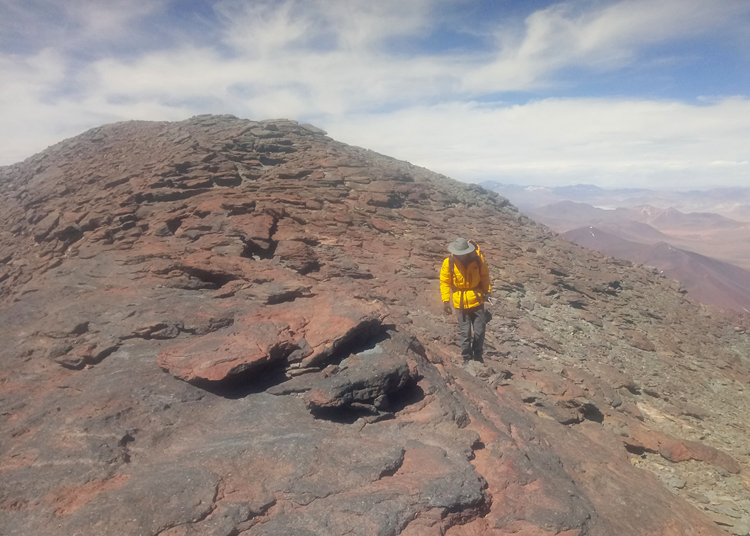Of Mice and Mummies: UM Study Reveals Higher Elevation Limit for Mammal Life

By Cary Shimek, UM News Service
MISSOULA – University of Montana researcher Jeffrey Good never suspected he would someday study freeze-dried mummy mice from atop some of the highest peaks in South America.
The mouse cadavers are a mystery because they were discovered on volcano summits reaching above 20,000 feet. The peaks rise from one of the most inhospitable spots on Earth, the Puna de Atacama plateau – a place so dry, cold and oxygen-poor that NASA uses it to practice hunting for life on Mars.
How could a mouse live up there?
“These discoveries are forcing us to reconsider the elevational limits of where life can persist,” said Good, a UM professor of ecology and evolution. “Some of these mice were discovered near ancient Incan ceremonial structures that were used to conduct human and animal sacrifices over 500 years ago. This led some early archeologists to speculate that mouse remains found in these areas were transported there by the Incas.
“However, our genetic results clearly show that these remains are not an anomaly associated with Incan transport, but part of a continuous population of mice that persist at elevations previously thought to be incompatible with mammalian life,” he said. “While humans occasional visit these peaks, the mice appear to be full-time residents.”
The research was a collaboration between UM, the University of Nebraska-Lincoln and the Universidad Austral de Chile. The results were published Oct. 23 in Current Biology: Cell Press.
The mummy mice were discovered on dry peaks where the temperature never rises above freezing and oxygen is less than half of that at sea level. Archaeologists first found the freeze-dried mice on expeditions to the Andean summits in the 1970s and ’80s and assumed the rodents somehow hitched a ride with Incas who used the peaks as sacred sites.
That hypothesis was cast into doubt in 2020, when this study’s lead author, UNL biology researcher Jay Storz, and fellow mountaineer Mario Pérez Mamani captured a live specimen of a leaf-eared mouse atop the 22,000-foot peak of Llullaillaco, a volcano straddling the Chile-Argentina border.
No mammal had ever been previously found living at such an extreme altitude. Storz and his colleagues wondered whether the high-elevation mice might represent a distinct subpopulation of the leaf-eared rodent. That’s where Good’s UM lab came in.
“Our role was to lead all of the genetic analyses, which included recovering genetic material from the samples and then sequencing and analyzing their genomes,” Good said. “Dr, Storz and his team sent the precious samples that they collected from expeditions to 21 Andean volcano summits to my laboratory for analysis.”
Using methods optimized for ancient DNA recovery, Good’s team sequenced whole genomes from 44 mice, including the 13 mummified mice from the tops of some of the highest peaks in the Andean mountains. The genetic work was led by UM postdoctoral researcher Dr. Schuyler Liphardt and enabled by DNA sequencing expert Tim Wheeler of the UM Genomics Core.
The genomic data clearly indicated that the mice from the summits, as well as those from the flanks or the base of the volcanoes in the surrounding desert terrain, were all from the same closely related population, leading the researchers to conclude the rodents were not hitchhikers, but mountaineers.
Now that the researchers have established that populations of leaf-eared mice somehow live in such an extreme environment, they want to study why and how. They want to pinpoint whatever adaptations are helping the rodents live the high life.
“It just boggles the mind that any kind of animal, let alone a warm-blooded mammal, could be surviving and functioning in that environment,” Storz said. “When you experience it all firsthand, it even further impresses upon you: How in God’s name is anything living up there?”
“Now that we know what is possible,” Good said, “we can study these natural populations to unravel how these extraordinary mice manage to persist in such extreme environments.”
###
Contact: Jeffrey Good, UM professor of ecology and evolution, 406-243-5771, jeffrey.good@umontana.edu.